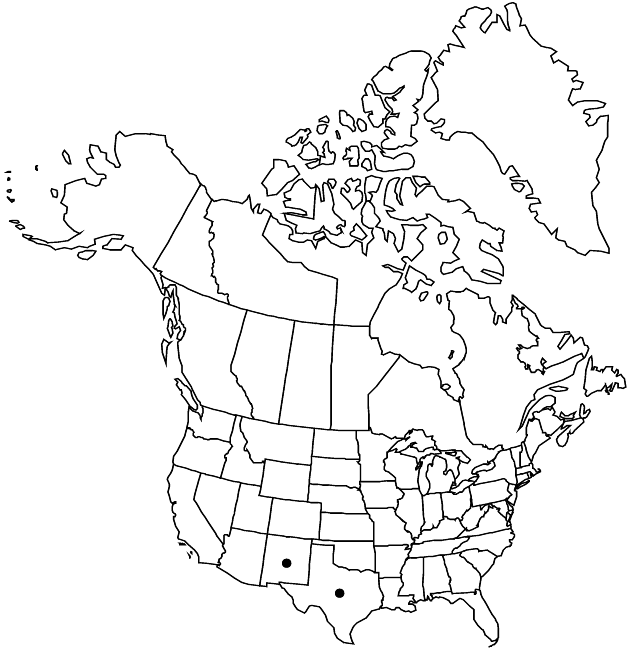Difference between revisions of "Helianthus paradoxus"
Rhodora 60: 272, fig. 1. 1958.
FNA>Volume Importer |
imported>Volume Importer |
||
| (3 intermediate revisions by 2 users not shown) | |||
| Line 8: | Line 8: | ||
}} | }} | ||
|common_names=Pecos or paradox sunflower | |common_names=Pecos or paradox sunflower | ||
| + | |special_status={{Treatment/ID/Special_status | ||
| + | |code=E | ||
| + | |label=Endemic | ||
| + | }}{{Treatment/ID/Special_status | ||
| + | |code=C | ||
| + | |label=Conservation concern | ||
| + | }} | ||
|basionyms= | |basionyms= | ||
|synonyms= | |synonyms= | ||
| Line 34: | Line 41: | ||
-->{{#Taxon: | -->{{#Taxon: | ||
name=Helianthus paradoxus | name=Helianthus paradoxus | ||
| − | |||
|authority=Heiser | |authority=Heiser | ||
|rank=species | |rank=species | ||
| Line 48: | Line 54: | ||
|publication title=Rhodora | |publication title=Rhodora | ||
|publication year=1958 | |publication year=1958 | ||
| − | |special status= | + | |special status=Endemic;Conservation concern |
| − | |source xml=https:// | + | |source xml=https://bitbucket.org/aafc-mbb/fna-data-curation/src/2e0870ddd59836b60bcf96646a41e87ea5a5943a/coarse_grained_fna_xml/V19-20-21/V21_367.xml |
|tribe=Asteraceae tribe Heliantheae | |tribe=Asteraceae tribe Heliantheae | ||
|subtribe=Asteraceae (tribe Heliantheae) subtribe Helianthinae | |subtribe=Asteraceae (tribe Heliantheae) subtribe Helianthinae | ||
Latest revision as of 21:11, 5 November 2020
Annuals, 130–200 cm. Stems erect, glabrous or ± hispid. Leaves mostly cauline; opposite (proximal) or mostly alternate; petioles 1.5–6 cm; blades lanceolate to lance-ovate, 7–17.5 × 1.7–8.5 cm, bases cuneate, margins entire or (larger leaves) toothed, abaxial faces ± scabrous, not gland-dotted. Heads 1–5. Peduncles 12–18 cm. Involucres hemispheric, 15–20 mm diam. Phyllaries 15–25, lanceolate to lance-ovate, 6–19 × 0.7–4 mm (equaling or slightly surpassing discs), (margins ciliate) apices (spreading to recurved) acuminate, abaxial faces usually glabrate or sparsely hispid. Paleae 8–9 mm, apices 3-toothed (apices glabrous). Ray florets 12–20; laminae 20–30 mm. Disc florets 50+; corollas 5–5.5 mm, lobes reddish; anthers dark, appendages yellowish or dark (style branches reddish). Cypselae 3–4 mm, glabrous; pappi of 2 lanceolate scales 2.5–2.9 mm. 2n = 34.
Phenology: Flowering late summer–fall.
Habitat: Saturated saline soils, desert wetlands
Elevation: 1000–1200 m
Discussion
Of conservation concern.
Helianthus paradoxus is listed by the U.S. Fish and Wildlife Service as an endangered species and is in the Center for Plant Conservation’s National Collection of Endangered Plants. It is of hybrid origin; the parents are H. annuus and H. petiolaris (L. H. Rieseberg et al. 1990). It occupies a different habitat type than either parent (H. annuus usually on clay-based mesic soils and H. petiolaris usually on dry, sandy soils).
Selected References
None.
